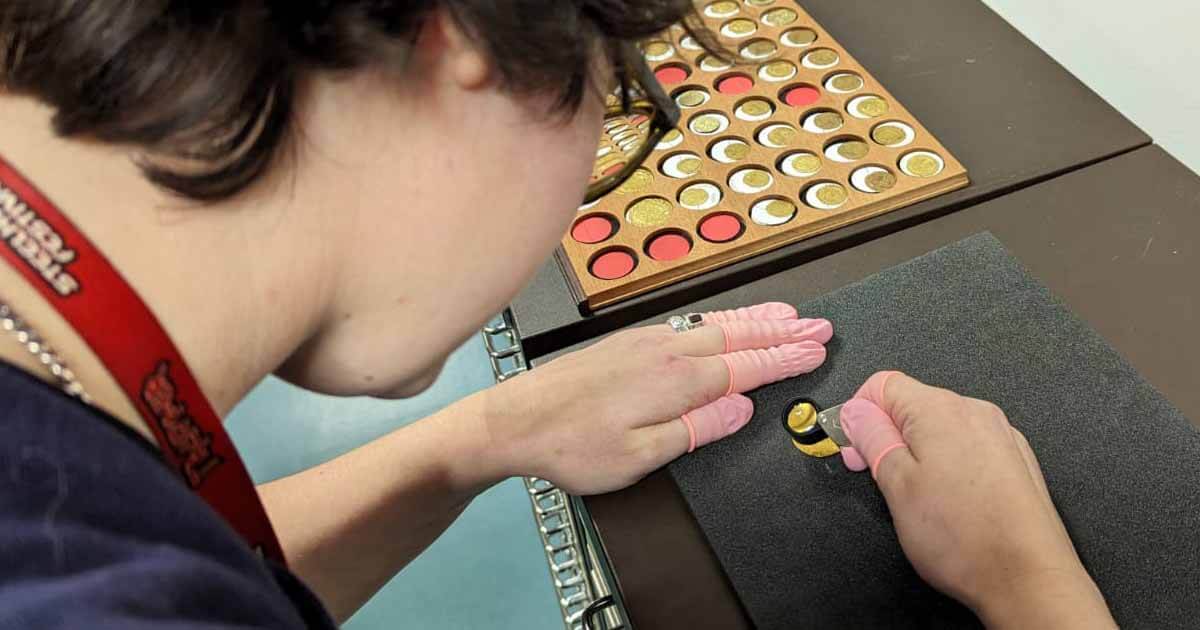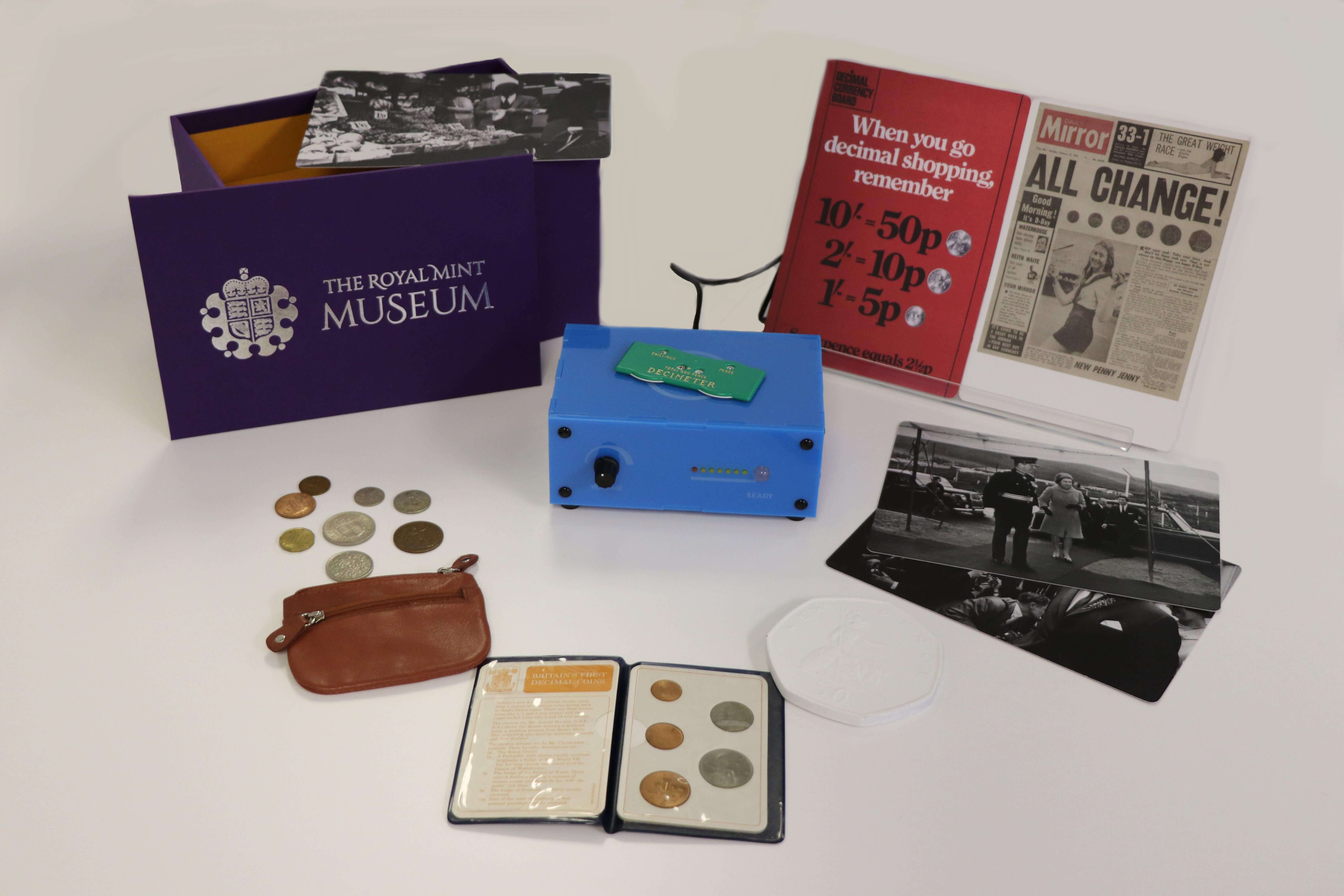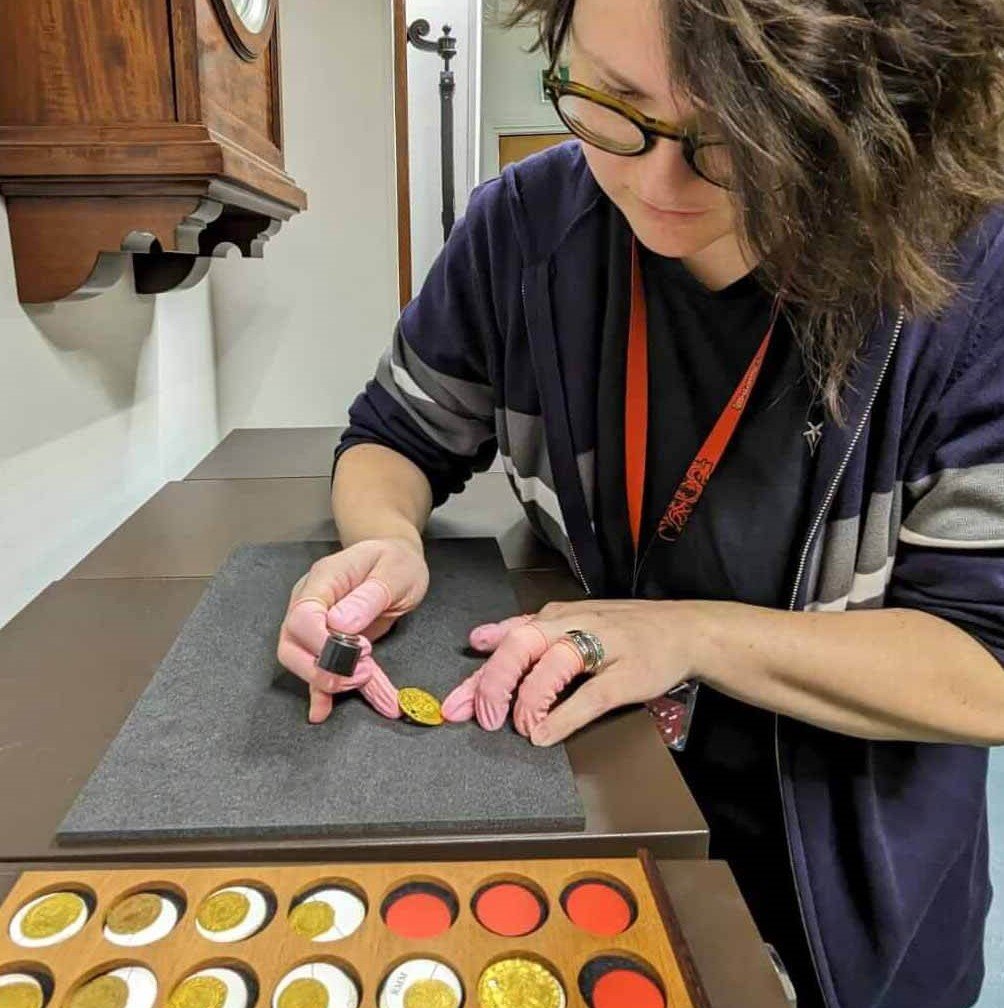Working at the Royal Mint Museum
by Beth Seaman
My name is Beth, and I am a postdoctoral researcher at the University of Birmingham. In November of 2022, I had the pleasure of undertaking a work experience placement at the Royal Mint Museum, spending two weeks on-site in Llantrisant. As a student with an interest in history and public engagement, this placement was excellent for helping me to gain experience in the museum and heritage sector.
The museum team are extremely friendly, and from my first day I felt welcome in the workspace, and excited to begin. The entire experience was jam-packed with interesting activities which the team kindly allowed me to join in with and observe- there was never a dull moment! During my first few days, I spent time in the Museum’s library with Sarah, the Collections Manager, gaining experience in cataloguing archival material. One of the objectives of the placement was to contribute to the Museum’s digitisation effort, enabling members of the public and researchers to access aspects of the material collection online. The chosen body of material for this project was the artwork submitted for the 1982 new pound coin design competition. These designs had yet to be catalogued and matched up to the artists who had produced them, so my first task was to tackle this by organising the designs into a set order. Next, I produced high-resolution scans of the artwork, ready for digitisation, and ordered and renamed the files for reference.

In between working on the digitisation project, David (Public Engagement and Information Officer) and the team had planned various activities for me to engage in to get an understanding of the different jobs involved in the Museum and in the heritage sector. I got to see Amy (Education and Learning Manager) in action, carrying out education workshops with students of various ages, and it was great to see how the Mint’s history can appeal to everyone. Part of the Museum’s specialism is in coin authentication, whereby members of the public can enquire about coins with unusual characteristics. It was exciting to accompany David on one of his trips to the laboratories to analyse some samples that had been submitted to the Museum.
I was given a Royal Mint Experience tour, and the opportunity to strike my own coin, gave me an insight into the public visitor experience of the site. Afterwards, I was taken behind the scenes with a fascinating tour by the Exhibitions Manager, Abigail, who shared her expertise in presenting exhibitions for the public and widening accessibility and engagement with different audiences.
I spent some time talking with Beth (Project Coordinator) about the Museum’s excellent outreach projects, such as the Short Story Competition and the Decimalisation Reminiscence Box Project. It was inspiring to see the passion which the whole team have towards combining the Museum’s collection with social wellbeing programmes. It was clear that the Reminiscence Box Project has been carried out with care and has made a positive impact on the care homes that have participated. I was happy to contribute to the project, albeit in a small capacity, by helping Megan (Museum Assistant) in packing the boxes ready to be sent out to their destinations.

An exciting part of the placement was being able to handle the main part of the Museum’s collection- the coins! My PhD explores medieval and early modern literature and history, so naturally I was most drawn to the Museum’s older objects at first. However, it was a pleasant surprise that aspects of the more modern history of the Mint were also fascinating to me. For example, the coins of Edward VIII who abdicated the throne in 1936, which were never released into circulation, and the large plaster models from each of the four decimal coinages of Queen Elizabeth II.
During the final few days of the placement, I had the opportunity to get stuck into some research with the help of Chris (Information and Research Manager). It was very exciting to have access to the library as well as the coin and medal collections. The material there has been very helpful to furthering my independent research skills as well as gathering information for my thesis. The team were very patient with my never-ending stream of questions about various objects, and were happy to help me to pursue any interests that developed throughout the course of the placement. I was able to get ‘kitted up’ with the things needed for archival object handling, such as finger cots and magnifying lenses, and got to analyse the coins myself.

My time at the Royal Mint Museum was equal parts inspiring, interesting, and exciting, and this was largely due to the friendliness and professionalism of the team. The experience has given me an insight into the way in which the heritage sector functions, as well as being valuable in furthering my academic interests.
Beth Seaman is a PhD student at the University of Birmingham, whose research analyses the development of popular medical knowledge in late medieval-renaissance England. This placement was generously funded by Midlands4Cities Doctoral Training Partnership.
